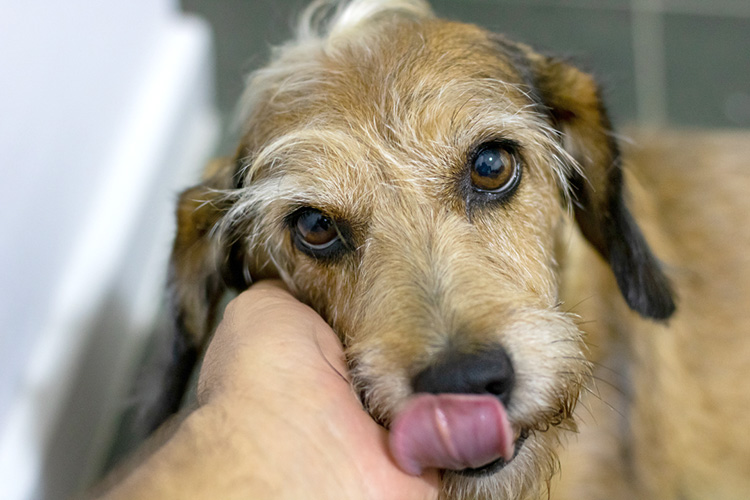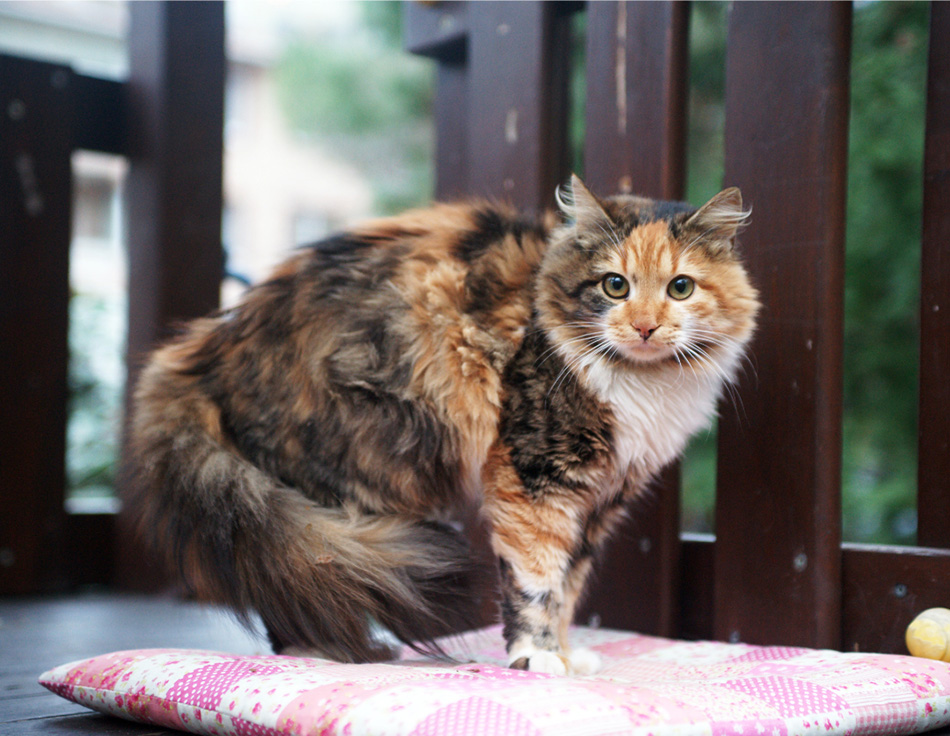New cat
How to set up your home to help your new cat settle in quickly
Cats, Adopters, Cat behaviour, Kitten

A hiss or a growl is very clear, but did you know that pets will start with very subtle body language that shows they are feeling anxious before they get verbal? These are called calming signals.
Learn to read these signs – and then you can help your pet by letting them move away, or by taking them away from what is making them uncomfortable. If they feel that they are being listened to, they may well quickly bounce back and try again – plus you are building a more trusting relationship with your pet.
Signals from a dog who is starting to feel uncomfortable or anxious.
Did you know? Dogs will use the play bow calming signal for both humans and dogs, and it is the most common calming signal to mis-read for play rather than avoidance.

Can you see the little dog's calming signals? A play bow to create space, whale eye and ears are pinned back to show discomfort.
Signals from a cat who is starting to feel uncomfortable or anxious. These might be otherwise confident and friendly cats who have reached their tolerance threshold.

The cat ignore - the tail here is also probably whipping back and forth. This cat has had enough attention and needs some space.
Signals from a scared cat:
Did you know? Cats often purr or are quite vocal in stressful situations, such as a visit to the vet clinic or when travelling in a vehicle. They may also purr when in pain or when they feel unwell to help calm themselves.

Can you see the calming signals? An arched back to make themselves look bigger, wide eyes and round pupils show that they are uncomfortable.